Pee Pads vs. Grass Pads: The Best Potty Training Option for Dogs
by Jamie Tedder on Oct 25, 2022
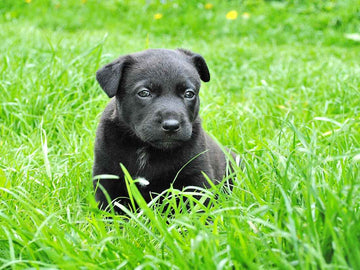
As pet owners, one of our core responsibilities is providing a hygienic and convenient potty option for our dog's bathroom needs. While outdoor breaks are the most ideal, they aren't always possible due to factors like bad weather, long work hours, mobility issues, or apartment living. In such cases, having an indoor alternative is essential for maintaining a sanitary environment.
In terms of indoor potty options, dog owners often choose between disposable pee pads and fresh grass pads. This article will discuss both options and explain why a dog grass pee pad, like Gotta Go Grass, emerges as an excellent choice.
What Are Pee Pads?
Dog pee pads are moisture-absorbing mats designed to help train dogs and puppies while preventing pee accidents around the house. They function similarly to baby diapers, featuring sponge-like layers that absorb liquid and a waterproof backing that prevents leakage onto floors or carpets.
Pee pads come in various sizes and absorbency levels, and some feature adhesive tabs to keep them securely in place. Pee pads are commonly used for:
-
Training puppies and small dogs to pee in designated areas.
-
Senior dogs or dogs with incontinence issues.
-
Travel, especially for dogs who struggle to hold their bladder for long periods.
The Risks of Using Pee Pads
While pee pads can be useful, some contain chemical absorbents that may be unsafe, among other drawbacks.
Environmental Concerns: Pee pads are disposable and non-biodegradable, contributing to landfill waste. Because they must be frequently replaced, they accumulate over time, making them a less sustainable choice for long-term use.
Training Confusion: The synthetic material may cause dogs to associate similar textures—like carpets and rugs—with acceptable potty areas. This can result in unwanted accidents around the house, making it harder to reinforce proper bathroom habits.
Ongoing Costs: Because pads should be replaced after one or two uses, costs can add up over time. For pet owners using them daily, the expense of continuously buying pee pads can quickly surpass the cost of a more sustainable dog potty solution.
Odor Retention: Pee pads can retain smells over time, leading to an unpleasant indoor environment. Even with regular changes, lingering odors can seep into flooring and fabrics, requiring additional cleaning efforts to keep your home fresh.

The Natural Advantage of Real Grass Pee Pads
A key distinction between fresh grass pads and pee pads is their materials. Pee pads are made from synthetic, absorbent layers, while grass pads use real, living grass with roots anchored to the soil. This creates a more natural potty area for dogs. Because dogs distinctively prefer grass for elimination, the texture and scent of real grass pads facilitate a more seamless transition.
Unlike pee pads, which lack the organic feel of real grass, fresh grass pads closely replicate the familiar outdoor experience. This makes them a practical and appealing indoor potty solution for pet owners looking for a more natural option.
Instinctual Potty Training
Most dogs naturally prefer grass over single-use pee pads or artificial grass for potty use, as the scent and texture closely resemble outdoor environments. This instinctual preference makes training easier, reinforcing proper potty behavior while reducing accidents on furniture and carpets. Unlike synthetic materials, which lack the organic scent and feel of real grass, a dog grass pad offers a more seamless transition for puppy training and housebreaking. Real grass helps dogs understand where to go, avoiding confusion and promoting consistent habits.
Convenience & Ease of Maintenance
Real grass pads require less frequent replacement than disposable pee pads for dogs, which should be changed after every few uses. While pee pads pile up quickly, a dog grass pad can last up to four weeks, depending on use. A little sunlight and occasional light watering will help keep the grass fresh, extending its usability. Plus, because the soil and roots absorb liquid waste, they require less frequent maintenance, making them a practically self-cleaning option for pet owners.
Eco-Friendly Alternative
Unlike synthetic pee pads for dogs, which contribute to plastic waste, natural grass pads are biodegradable and can even be composted, further reducing environmental impact. Over time, plastic pee pads accumulate in landfills, while grass pads break down naturally, making them an environmentally responsible choice. Choosing indoor dog potty solutions like Gotta Go Grass benefits your pet while promoting sustainability. By composting used grass pads instead of discarding them, you can contribute to a greener planet.
Better Indoor Aesthetics
Traditional indoor pee pads for dogs can be an eyesore, often clashing with home decor and creating a cluttered appearance. Meanwhile, a natural dog grass pad brings a touch of nature indoors, blending seamlessly with home aesthetics while providing a designated indoor potty area for your dog. Its fresh, green appearance is far more appealing than disposable pads, making it a better visual choice for pet owners who want a clean and natural-looking indoor dog potty.
Odor Control
Real grass naturally absorbs urine and neutralizes urine smell. Because the roots and soil help break down liquid waste, most dogs find it more pleasant to use, and owners benefit from reduced indoor pet odors. On the other hand, disposable pee pads can create lingering smells over time, whereas grass pads offer a self-cleaning benefit that keeps indoor spaces fresher. Natural grass pads help maintain a more hygienic potty solution without overwhelming the home with unwanted scents. This is especially helpful for larger breeds or households with multiple dogs.

How to Get Dog to Pee on a Grass Pad
Grass pads are especially useful for small dogs, senior dogs, and dogs suffering from incontinence. Studies show that over 20% of female spayed dogs and up to 30% of large-breed dogs may develop urinary incontinence, making a reliable indoor potty solution crucial. Grass pads are also ideal for pet owners who work long hours or live in apartments.
Step 1: Leash & Direct Your Dog
If your dog has an urge to pee, gently guide them onto the grass pad using a leash. If needed, pick them up and place them directly on the pad. Give them a moment to sniff and get familiar with the surface, ensuring they associate it with potty time.
Step 2: Reward Positive Behavior
Praise and reward your dog with treats when they successfully use the grass pad. Use consistent key phrases like "go potty" to reinforce the behavior. Reward immediately after they finish to strengthen the connection between using the pad and receiving positive reinforcement.
Step 3: Establish a Routine
Dogs thrive on routine. Take them to the grass pad at regular intervals, such as after meals, naps, and playtime. Keeping a consistent schedule helps prevent accidents and speeds up potty training.
Step 4: Continue Encouragement
Over time, your dog should start using the grass pad independently. To reinforce positive behavior, continue rewarding successful potty habits. If accidents happen, calmly redirect them to the pad and avoid punishment to prevent confusion.
Step 5: Maintain the Grass Pad
Real grass pads last longer than disposable pee pads but still require occasional care. Lightly water the grass and expose it to sunlight once in a while to keep it fresh. Remove solid waste daily and replace the grass patch every few weeks as needed. Read this guide on how often you should change your grass pad for dogs.
Travel Potty Training with Grass Pads
For pet owners who travel frequently, maintaining potty training habits on the go is essential. Disposable pee pads may seem like an easy travel solution, but grass pads offer better odor control and a more natural experience. Additionally, unlike artificial turf, which requires frequent cleaning to prevent odor buildup, real grass naturally absorbs urine and minimizes smells.
How to Use Grass Pads While Traveling
-
Line Your Travel Area: If traveling by car, such as an RV, place a grass pad in your pet’s designated space. This helps create a familiar indoor potty area, reducing stress and ensuring your dog has a clean potty option during long trips.
-
Reinforce Training: Stick to your dog’s regular potty routine to prevent regression. Take scheduled breaks and encourage them to use the grass pad just as they would at home, reinforcing consistent habits even in new environments.
-
Choose a Portable Option: Gotta Go Grass pads come with trays for easy transport and containment. They help prevent liquid waste from seeping onto car floors, making them a mess-free solution compared to artificial turf, which can trap lingering odors.
-
Dispose Responsibly: Grass pads are biodegradable, making them easier to dispose of than synthetic pee pads. If you're staying in a pet-friendly hotel or RV park, you can compost the used grass pad rather than adding to landfill waste.

Final Thoughts
While disposable pee pads offer a convenient alternative, they’re not ideal for long-term use. Not only do they require frequent replacement, but they also contribute to plastic waste since they’re not biodegradable. For a more sustainable, natural, and truly hassle-free potty training experience, real grass pads like Gotta Go Grass are the better choice. They align with your dog’s instincts, minimize odor, and provide an eco-friendly solution that benefits your pet and the planet.
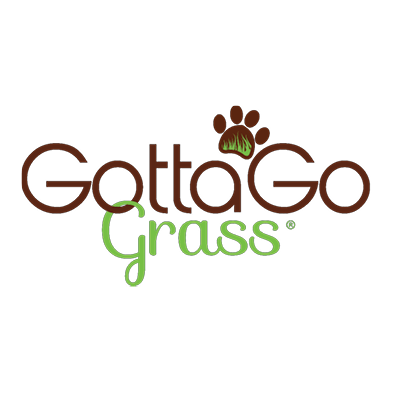
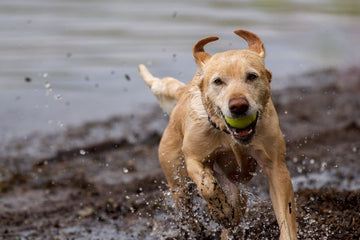
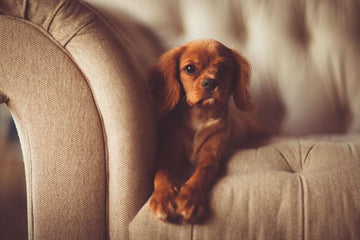

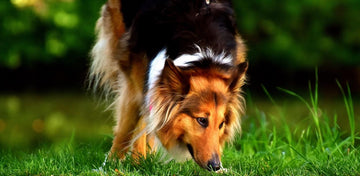
Hello,
I’m a link builder with 5 years of experience. I believe in white hat SEO and know that links are the most important part of your marketing strategy. They’re also the easiest way to get to traffic fast! With my help, you can build links to any site on earth with me being your content spokesperson or having me write genuine articles for you.
You can pay monthly or per-project basis – whichever suits you best! So what do you say? Want to chat about building some links together?
Regards